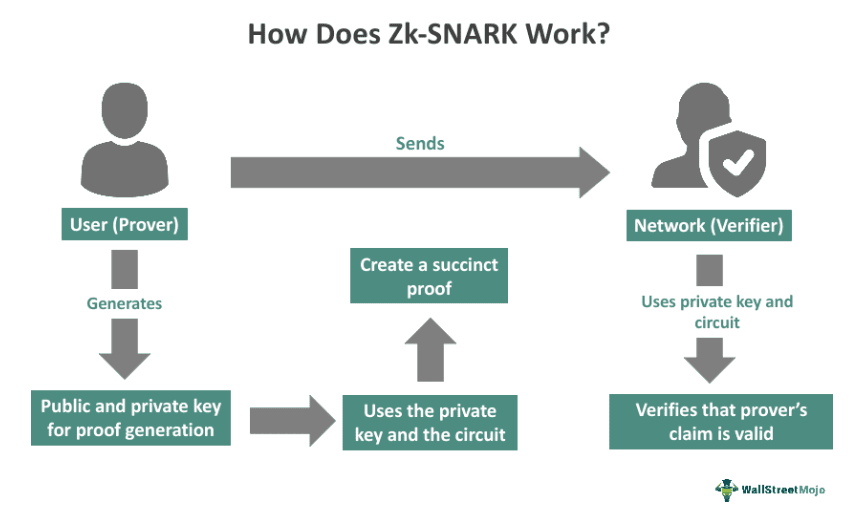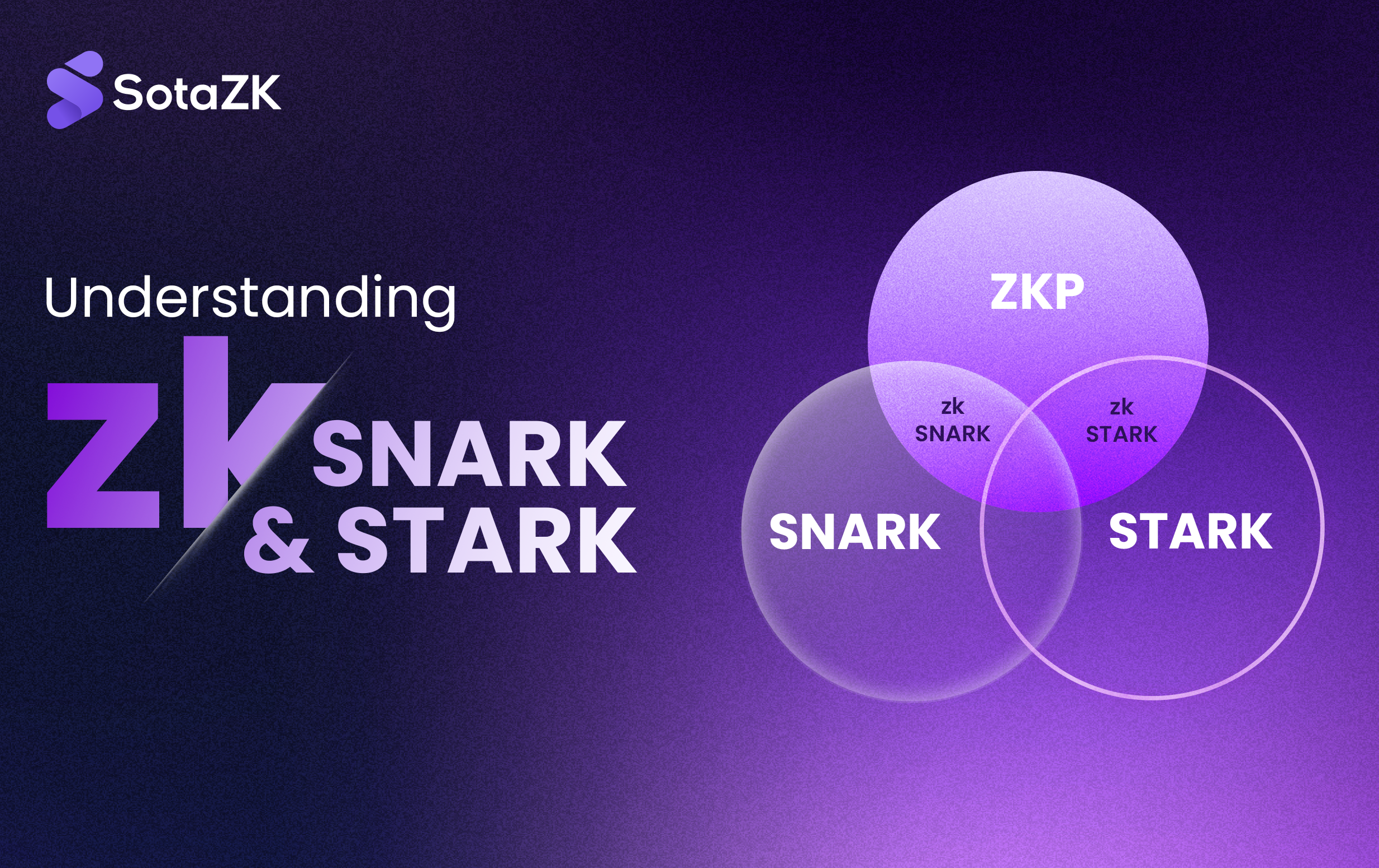In the world of cryptography and blockchain, zero-knowledge proofs (ZKPs) have emerged as powerful tools for ensuring privacy and security. Two of the most prominent types of ZKPs are zk-SNARKs (Zero-Knowledge Succinct Non-Interactive Argument of Knowledge) and zk-STARKs (Zero-Knowledge Scalable Transparent Argument of Knowledge). This blog will delve into the differences between zk-SNARKs and zk-STARKs, exploring their mechanisms, strengths, and applications.
What are zk-SNARKs?
zk-SNARKs are cryptographic proofs that allow one party to prove to another that a statement is true, without revealing any information beyond the validity of the statement itself. They are particularly valued for their succinctness and efficiency.
- Succinctness: The proof size is small and can be verified quickly.
- Non-Interactive: Once the proof is generated, no further interaction between the prover and verifier is needed.
- Argument of Knowledge: Ensures that the prover possesses the knowledge of the statement.
How zk-SNARKs Work

- Setup Phase: Involves generating public parameters through a trusted setup, which is crucial for the security of zk-SNARKs. This setup phase can be complex and requires trust in the initial participants.
- Proving Phase: The prover uses the public parameters to generate a proof that a particular statement is true.
- Verification Phase: The verifier uses the proof and public parameters to check the validity of the statement without learning any additional information.
Advantages of zk-SNARKs
- Efficiency: zk-SNARKs are computationally efficient and have small proof sizes.
- Privacy: They provide strong privacy guarantees by not revealing any underlying data.
Challenges of zk-SNARKs
- Trusted Setup: The requirement for a trusted setup can be a significant drawback, as any compromise in this phase can undermine the security of the system.
- Complexity: The setup and proving processes can be computationally intensive and complex.
What are zk-STARKs?
zk-STARKs are a newer form of zero-knowledge proofs designed to address some of the limitations of zk-SNARKs. They aim to be more scalable and eliminate the need for a trusted setup.
- Scalable: zk-STARKs are designed to handle large amounts of data and complex computations efficiently.
- Transparent: They do not require a trusted setup, making them more secure and easier to deploy.
How zk-STARKs Work
- Commitment Phase: The prover commits to a certain computation by encoding it into a polynomial.
- Proof Generation: The prover generates a proof that the computation was performed correctly by evaluating the polynomial.
- Verification Phase: The verifier checks the proof using mathematical properties of the polynomial without needing any additional information.
Advantages of zk-STARKs
- No Trusted Setup: zk-STARKs eliminate the need for a trusted setup, reducing potential security risks.
- Scalability: They are highly scalable and can handle large computations efficiently.
- Transparency: The transparency of zk-STARKs enhances security and trustworthiness.
Challenges of zk-STARKs
- Proof Size: zk-STARK proofs are generally larger than zk-SNARK proofs, which can affect their transmission and storage.
- Computation: The proving process can be more computationally intensive, requiring significant resources.
Comparison: zk-SNARKs vs. zk-STARKs Applications
Both zk-SNARKs and zk-STARKs have their unique benefits, and the choice between them depends on the specific requirements of the application. It’s also crucial to consider that both are advanced zero-knowledge proof technologies undergoing continuous research, so comparisons may change with ongoing developments in the field.
| Feature |
zk-SNARKs |
zk-STARKs |
|
Trusted Setup
|
Required
|
Not required
|
|
Proof Size
|
Small
|
Larger
|
|
Verification
|
Fast
|
Relatively fast
|
|
Scalability
|
Limited scalability
|
Highly scalable
|
|
Transparency
|
Relies on trusted setup
|
Fully transparent
|
|
Security
|
Potential vulnerability in trusted setup
|
Stronger due to transparency
|
|
Use Cases
|
Privacy-focused applications
|
Scalable applications requiring transparency
|
zk-SNARKs vs. zk-STARKs in the Real World
zk-SNARKs
- Efficiency and Speed: zk-SNARKs are known for their efficiency and fast verification times. A prominent example is their use in Zcash, a privacy-focused cryptocurrency. In Zcash, zk-SNARKs allow users to prove that they have made a valid transaction without revealing any details about the transaction itself, such as the amount or the parties involved.
- Applications Beyond Cryptocurrencies: zk-SNARKs are also used in other blockchain projects. For example, Ethereum is exploring zk-SNARKs to improve scalability by allowing more transactions to be processed off-chain while maintaining security.
zk-STARKs
- Scalability and Security: zk-STARKs offer enhanced scalability and security without needing a trusted setup. They can handle large computations efficiently, making them suitable for applications that require processing a lot of data.
- Applications in DeFi: In decentralized finance (DeFi), zk-STARKs are being used to enhance the efficiency and security of various platforms. For example, DeFi projects can use zk-STARKs to verify large batches of transactions quickly and securely, improving overall performance.
Conclusion
Both zk-SNARKs and zk-STARKs are groundbreaking advancements in the field of cryptography, each with its unique strengths and challenges. zk-SNARKs are known for their efficiency and strong privacy guarantees, but their reliance on a trusted setup can be a drawback. On the other hand, zk-STARKs offer scalability and transparency, making them suitable for a broader range of applications, despite their larger proof sizes.
Choosing between zk-SNARKs and zk-STARKs depends on the specific requirements of the application, such as the need for scalability, privacy, and security. As the field of cryptography continues to evolve, both zk-SNARKs and zk-STARKs are likely to play crucial roles in the development of secure and efficient blockchain technologies.
Related Content:
Zero Knowledge Proofs Explained: The Future of Privacy and Security
Rachel Nguyen
Marketing Executive| SotaZK

